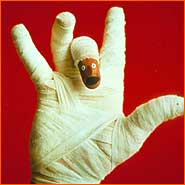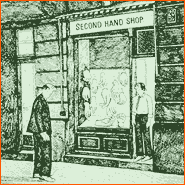 |
Sequence of events for hand surgery
- As a rule a patient must "fast" before surgery, that is to say he should not eat, drink or smoke within the six hours before
being anesthetized. In some cases of local anesthesia, the patient is allowed to eat a light meal beforehand.
- In the prep room, the patient is administered the appropriate anesthesia. The side and site to be operated upon is
double-checked with the patient in order to prevent a mix-up.
- The patient is placed comfortably on the operating table. The surgeon should reconfirm the patient's identity and side
and site to be operated upon before beginning the surgery in the operating room!
- The arm (hand) to be operated upon is placed on a so-called hand table.
- Exsanguination (blood "removal") will be carried out on arm to be operated upon.
- The hand and arm are disinfected.
- The hand and arm are covered with sterile cloths.
- The hand surgeon and his assistant each sit on one side of the outstretched arm and the OP nurse sits between them
with the instrument table in order to comfortably hand the instruments to the surgeons.
- The operation is carried out.
- Bandages and, if need be, a cast are applied by the surgeon or his assistant.
- The surgeon fills out the appropriate surgical paperwork:
- Information about the operation carried out for the patient and, if need be, the physician in charge of further treatment.
- Information about the necessary post-surgical measures for which the patient is responsible (for example, elevation of extremity, follow-up appointments)
- If necessary, a certificate of disability
- Dictation of the surgical report
- Proper analysis of histological specimens collected during surgery (e.g. tissue samples), if applicable.
- If necessary, information for care givers (e.g. parents, care providers)
- Contact information for those who have undergone out-patient surgeries so that either the surgeon or the responsible
surgical emergency physician can be contacted if necessary after the surgery.
 back to top back to top
|
 |
 |





